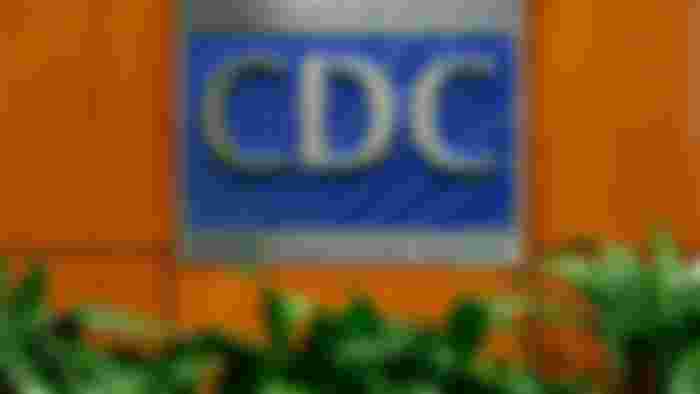(CNN)Vaccine experts are warning the federal government against rushing out a coronavirus vaccine before testing has shown it's both safe and effective. Decades of history show why they're right.

FDA signals vaccine could green light early
Their concern that the FDA may be moving too quickly heightened when FDA Commissioner Dr. Steven Hahn told the Financial Times that his agency could consider an emergency use authorization (EUA) for a Covid-19 vaccine before late stage clinical trials are complete if the data show strong enough evidence it would protect people.

[bad iframe src]
The commissioner to allow unapproved medical products to be used in an emergency when there are no adequate or approved alternatives. An EUA is not the same as full approval and it can be withdrawn.
That's what happened with hydroxychloroquine and chloroquine. The FDA an EUA to the drugs -- much praised by President Donald Trump -- on . It subsequently its EUA in June after studies showed they were not effective and could cause serious heart problems.
Vaccine approval
For a vaccine to be , scientists must gather enough data through clinical trials in large numbers of volunteers to prove it is safe and effective at protecting people against a disease. Once the data is collected, FDA advisers usually spend months considering it.

An EUA is much quicker. Only once before has the FDA given a vaccine this lesser of an EUA, but it was in an unusual circumstance. Soldiers had sued, claiming a mandatory anthrax vaccine made them sick, and a judge put a hold on the program. The Department of Defense asked for that then overrode the court ruling in 2005, so it could continue vaccinating military personnel -- this time on a voluntary basis.
Otherwise, vaccines have had to go through the entire clinical trial process and FDA approval process, which can take months or years.
When the vaccine making process has been rushed, there have been bad outcomes.
The Cutter incident
On April 12, 1955 the government announced the first vaccine to protect kids against polio. Within days, labs had made thousands of lots of the vaccine. Batches made by one company, Cutter Labs, accidentally contained live polio virus and it caused an outbreak.
More than 200,000 children got the polio vaccine, but within days the government had to abandon the program.
"Forty thousand kids got polio. Some had low levels, a couple hundred were left with paralysis, and about 10 died," said Dr. Howard Markel, a pediatrician, distinguished professor, and director of the Center for the History of Medicine at the University of Michigan. The government suspended the vaccination program until it could determine what went wrong.

Monkey trouble
However, increased oversight failed to discover another problem with the polio vaccine.
From 1955 to 1963, between 10% and 30% of polio vaccines were contaminated with (SV40).
"The way they would grow the virus was on monkey tissues. These rhesus macaques were imported from India, tens of thousands of them," medical anthropologist S. Lochlann Jain said. "They were gang caged and in those conditions, the ones that didn't die on the journey, many got sick, and the viruses spread quickly," added Jain, who taught a history of vaccines course at Stanford and is working on a publication about the incident. Scientists wrongly thought the formaldehyde they used would kill the virus. "It was being transferred to millions of Americans," Jain said.

"Many believe this issue wasn't adequately pursued," Jain said. Some studies showed a possible link between the virus and cancer. The US Centers for Disease Control said most are "reassuring" and find no link.
No current vaccines contain SV40 virus, the CDC says, and there's no evidence the contamination harmed anyone.
The epidemic that never was
In 1976, scientists predicted a pandemic of a new strain of influenza called swine flu. More than 40 years later, some historians call it "flu epidemic that never was."
"President Ford was basically told by his advisers, that look, we have a pandemic flu coming called swine flu that may be as bad as Spanish flu," said Michael Kinch, a professor of radiation oncology in the school of medicine at Washington University in St. Louis. His latest book, "Between Hope and Fear," explores the history of vaccines.
"Ford was being cajoled to put forward a vaccine that was hastily put together. When you have a brand new strain situation like that, they had to do it on the fly," Kinch said.
Ford made the decision to make the immunization compulsory.

The government launched the program in about seven months and 40 million people got vaccinated against swine flu, according to the CDC. That vaccination campaign was later linked to cases of a neurological disorder called Guillain-Barre syndrome, which can develop after an infection or, rarely, after vaccination with a live vaccine.
"Unfortunately, due to that vaccine, and the fact that it was done so hastily, there were a few hundred cases of , although it's not definitive that they were linked," Kinch said.
The the increased risk was about 1 additional case of Gullain-Barre for every 100,000 people who got the swine flu vaccine. Due to this small association, the government stopped the program to investigate.
"It was kind of a fiasco," Markel said. "The good news is that there never was an epidemic of swine flu. So we were safe, but that shows you what could happen."








thats a important articale